Hearty Beef Ramen Noodle Soup Recipe: Cozy Comfort in a Bowl
Slurping through a steaming bowl of beef ramen noodle soup feels like a warm culinary hug on a chilly evening.
Noodles dance with tender meat strips in a rich, savory broth that promises comfort and satisfaction.
Memories of street food in tokyo drift through each carefully crafted spoonful.
Umami flavors weave complex notes of depth and warmth across your palate.
Fragrant herbs and perfectly cooked beef create a symphony of taste that beckons you closer.
Seasonal ingredients transform this classic dish into a personal masterpiece waiting to be enjoyed.
Beef Ramen Noodle Soup Highlights And Ingredients
Savor Comfort in a Bowl: This ramen recipe offers incredible depth and satisfaction.
Ingredients For Beef Ramen Noodle Soup
Main Protein:Aromatics and Seasonings:Liquid and Finishing Ingredients:Noodles and Toppings:Step-By-Step Beef Ramen Noodle Soup Directions
Step 1: Trim and Season Beef
Cut away the bone from chuck roast and slice beef into bite-sized chunks.
Generously sprinkle with salt and black pepper to enhance flavor.
Step 2: Sizzle and Brown Meat
Warm oil in a heavy Dutch oven over high heat.
Carefully place beef pieces in a single layer, allowing each piece to develop a rich golden crust.
Work in batches if needed.
Transfer browned meat to a separate plate.
Step 3: Create Aromatic Base
Toss into the same pot:Sauté until vegetables turn golden and release fragrant notes.
Stir in spicy gochujang paste and cook until ingredients meld together.
Step 4: Build Robust Broth
Pour beef broth into the pot, stirring to incorporate all the delicious browned bits.
Gently reintroduce seared beef and reserved bones.
Cover and simmer on low heat for approximately two hours until meat becomes fork-tender.
Step 5: Elevate and Serve Soup
Remove bones and discard.
Shred beef into delicate pieces.
Enhance broth with:Adjust seasoning with salt and pepper.
Cook ramen noodles directly in soup or separately.
Ladle into deep bowls and garnish.
Tips For Beef Ramen Noodle Soup Success
Flavor Options For Beef Ramen Noodle Soup
Suggested Pairings For Beef Ramen Noodle Soup
Proper Storage For Beef Ramen Noodle Soup
FAQs
Gochujang paste adds a rich, spicy, and slightly sweet Korean flavor that gives the beef ramen a deep, complex taste profile and helps create a more authentic Asian-inspired broth.
Yes, you can substitute chuck with other tough, flavorful cuts like brisket or short ribs that have enough fat and connective tissue to become tender during the long, slow cooking process.
Searing creates a delicious brown crust that develops rich, caramelized flavors through the Maillard reaction, which adds depth and complexity to the overall soup’s taste before the slow simmering begins.
Print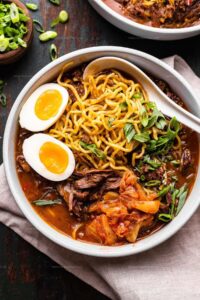
Beef Ramen Noodle Soup Recipe
- Total Time: 2 hours 20 minutes
- Yield: 6 1x
Description
Hearty beef ramen noodle soup delivers a symphony of umami flavors that dance across your palate. Rich broth, tender meat, and silky noodles create a comforting bowl you’ll crave on chilly evenings.
Ingredients
Protein:
- 3 lbs (1.36 kg) bone-in beef chuck
- 2 soft boiled eggs
Soup Base and Seasonings:
- 8 cups (1.9 liters) beef broth
- 1/4 cup (60 ml) gochujang paste
- 2 tablespoons (30 ml) fresh minced ginger
- 4 garlic cloves (minced)
- 1 tablespoon (15 ml) rice wine vinegar
- 1 tablespoon (15 ml) fish sauce
- 1 tablespoon (15 ml) kosher salt
- 1 teaspoon freshly cracked pepper
Vegetables and Cooking Ingredients:
- 1 yellow onion (diced)
- 20 oz (567 g) fresh ramen noodles
- 2 tablespoons (30 ml) neutral oil
- 2 tablespoons (30 ml) toasted sesame oil
- 1 tablespoon (15 ml) sesame oil (for drizzling)
- 1/2 cup (120 ml) minced green onions
- 1/2 cup (120 ml) kimchi (chopped)
Instructions
- Prepare the beef by separating the bone from chuck roast and slice into 2-inch cubes. Season generously with salt and black pepper.
- Heat cooking oil in a Dutch oven at medium-high temperature. Brown beef pieces in batches, ensuring each side develops a rich caramelized crust. Transfer seared meat to a separate plate.
- In the same pot, sauté diced onions, minced garlic, and grated ginger for 3-4 minutes until aromatic and golden. Incorporate gochujang paste, stirring continuously for an additional 2-3 minutes.
- Pour beef broth into the pot, mixing thoroughly. Gently reintroduce seared beef and reserved bones. Reduce heat to medium-low, cover, and allow the soup to simmer for approximately 2 hours until meat becomes fork-tender.
- Discard beef bones after cooking. Carefully shred the meat using two forks. Enhance the broth’s flavor by adding rice wine vinegar, fish sauce, and sesame oil. Adjust seasoning with salt and pepper.
- Cook ramen noodles directly in the soup or separately. Transfer noodles and broth into serving bowls. Garnish with chopped kimchi, halved soft-boiled eggs, and thinly sliced green onions.
Notes
- Select chuck roast or short ribs for maximum tenderness and rich flavor, ensuring meat becomes melt-in-your-mouth soft during slow cooking.
- Searing beef creates deep caramelization, developing complex umami notes that elevate the entire soup’s depth and richness.
- Allow sufficient simmering time to break down tough meat fibers, creating incredibly tender beef that easily shreds with a fork.
- Customize heat levels by adjusting gochujang paste quantity, letting personal spice preferences guide your cooking experience.
- Prep Time: 20 minutes
- Cook Time: 2 hours
- Category: Lunch, Dinner
- Method: Sautéing
- Cuisine: Japanese
Nutrition
- Serving Size: 6
- Calories: 660 kcal
- Sugar: 4 g
- Sodium: 920 mg
- Fat: 38 g
- Saturated Fat: 12 g
- Unsaturated Fat: 23 g
- Trans Fat: 0.5 g
- Carbohydrates: 42 g
- Fiber: 3 g
- Protein: 44 g
- Cholesterol: 110 mg

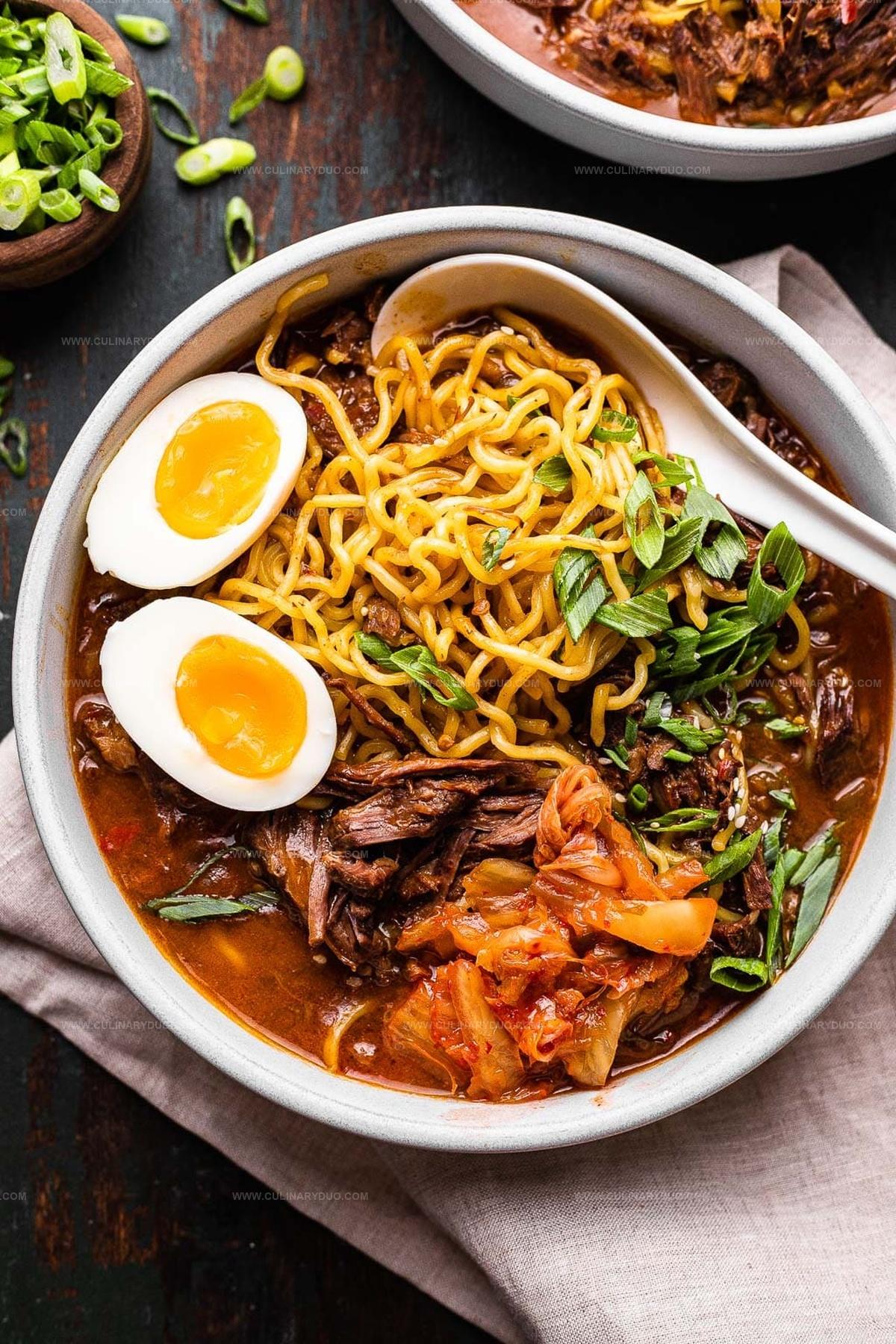
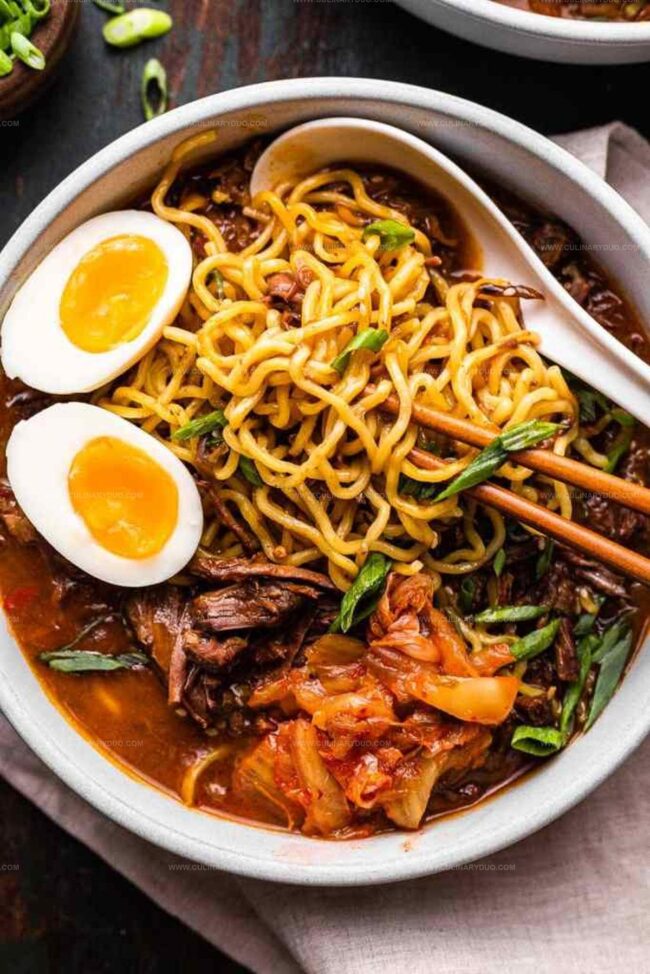
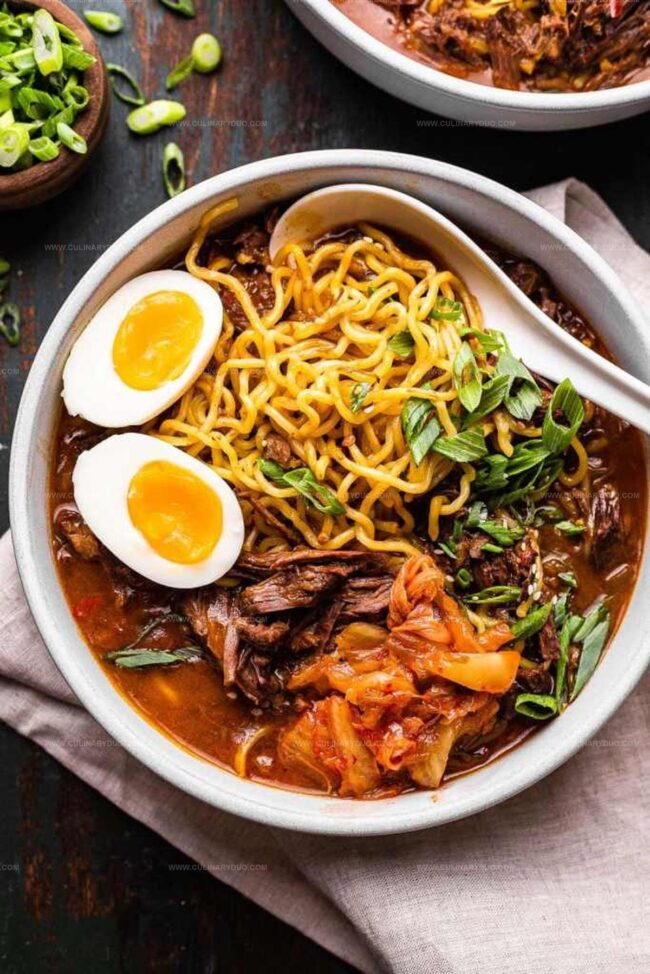
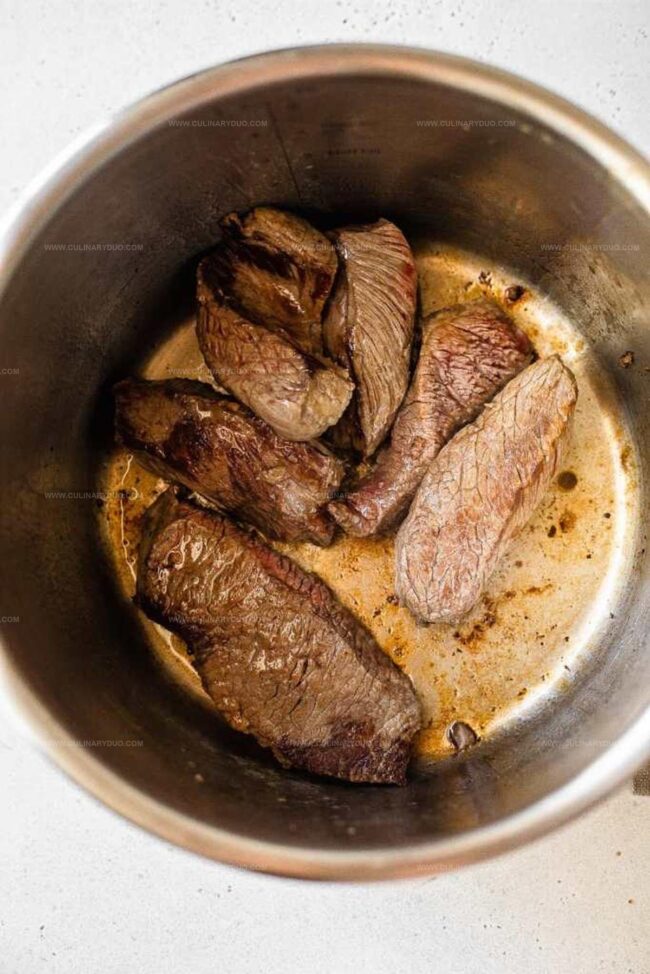
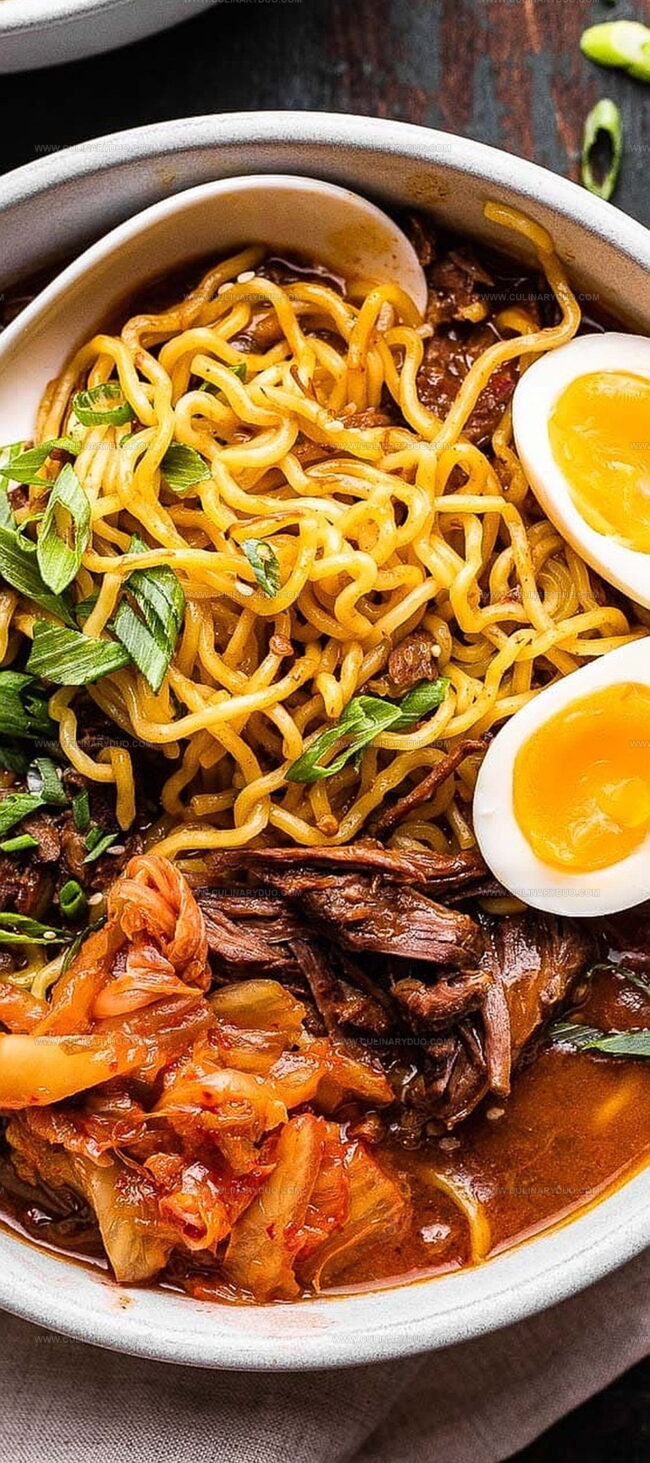
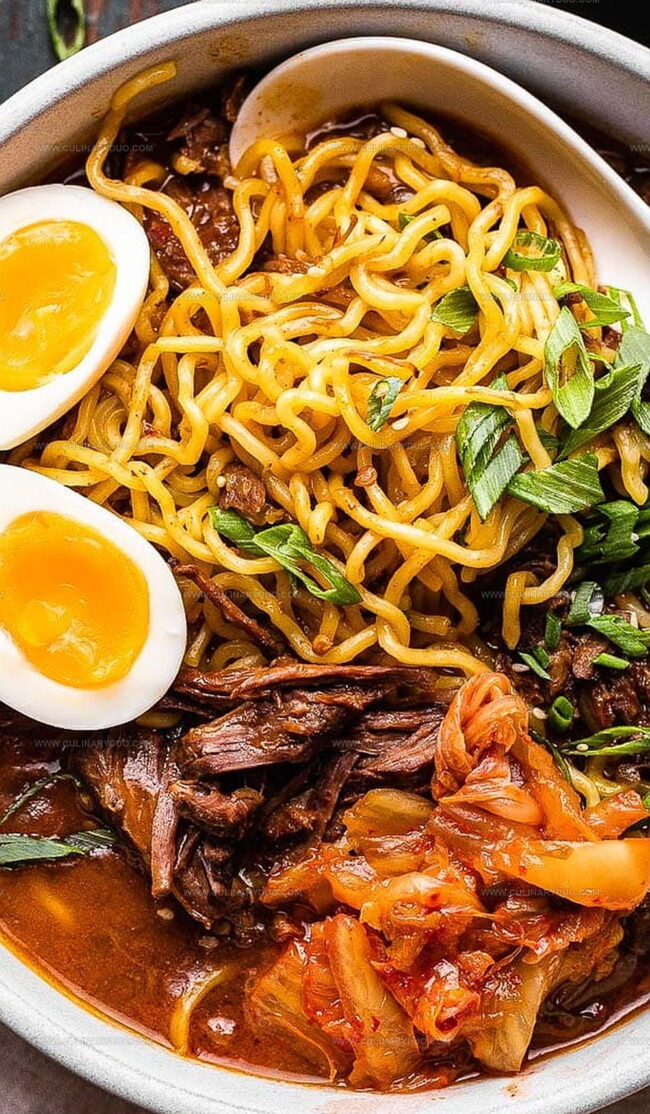
Natalie Brooks
Co-Founder & Content Strategist
Expertise
Education
eCornell
Natalie brings the vibrant, plant-powered side to Culinary Duo. After earning her Plant-Based Nutrition Certificate from eCornell, she combined her love for fresh ingredients with a passion for storytelling, aiming to make healthy cooking simple and satisfying.
Her kitchen motto: good food doesn’t need a fancy label, it just needs fresh ideas and a little creativity. Outside of writing and recipe testing, Natalie’s happiest in her garden, exploring farmers’ markets, or mixing global flavors into new kitchen experiments.